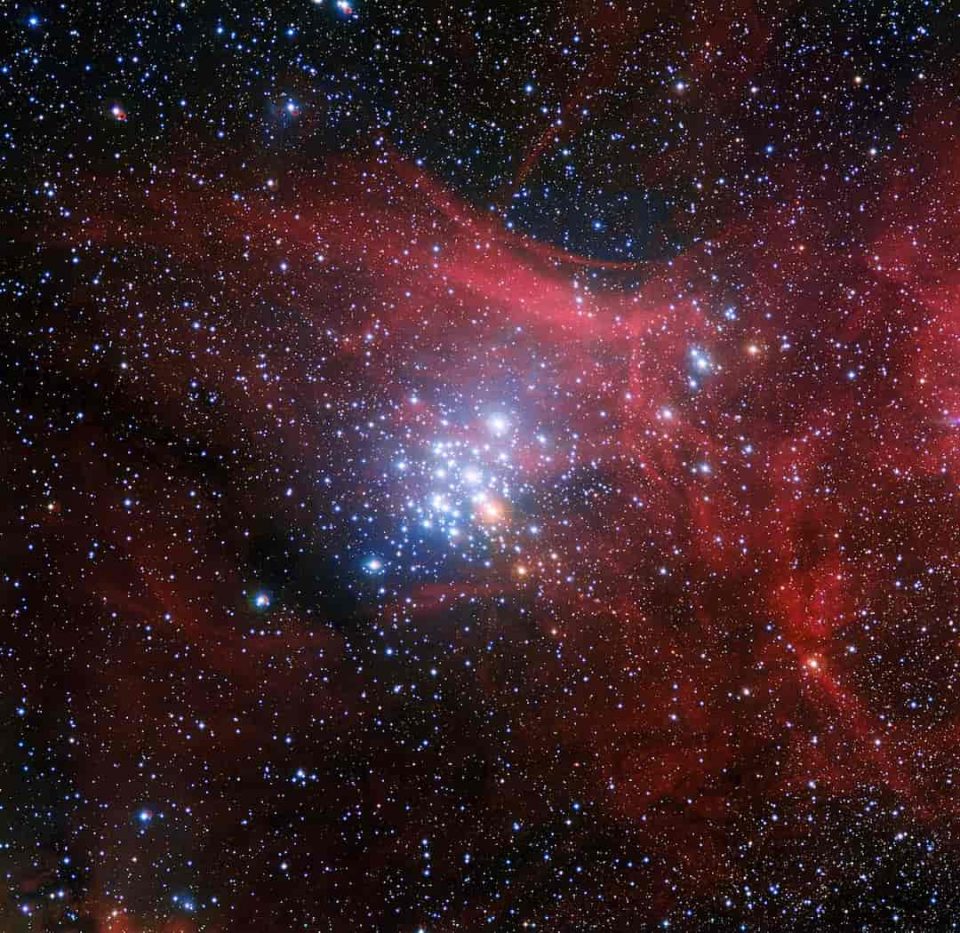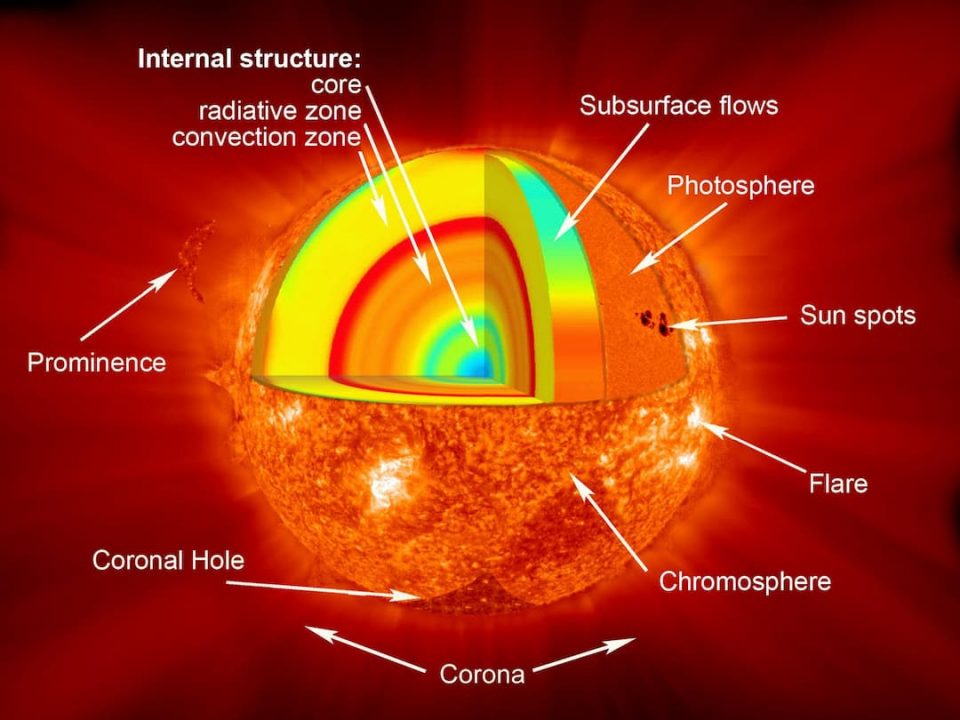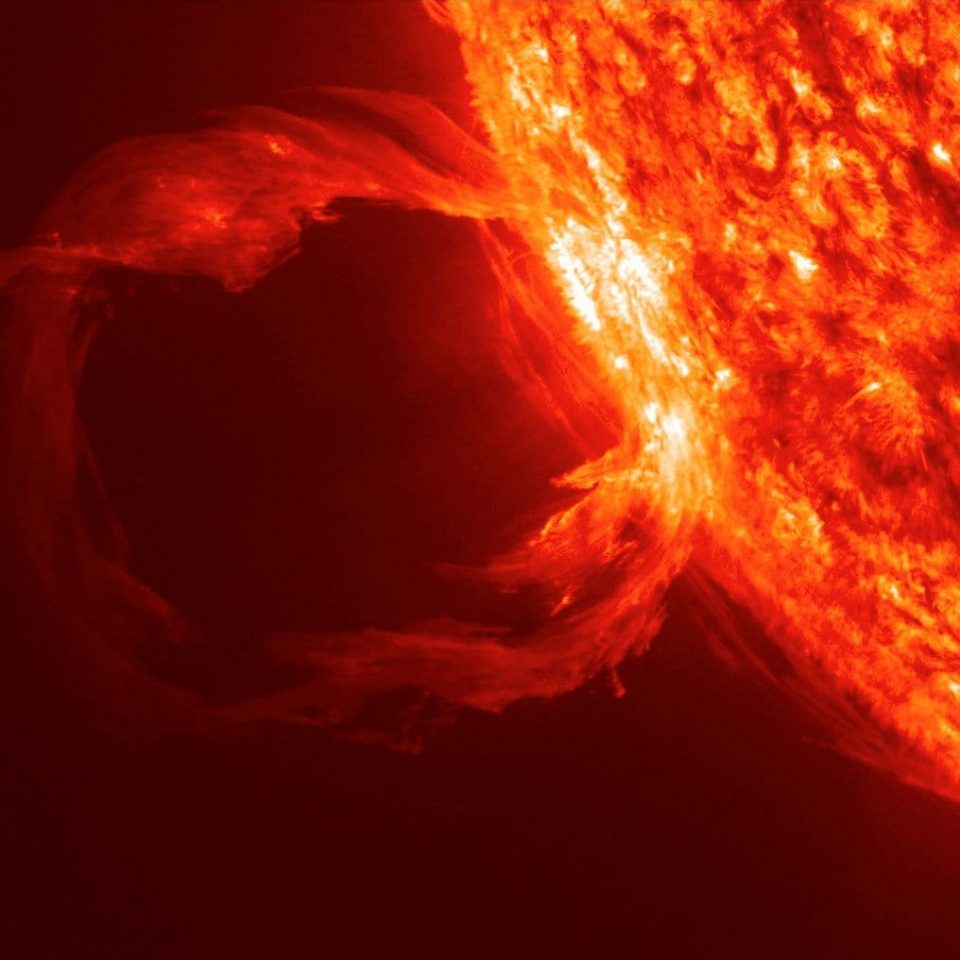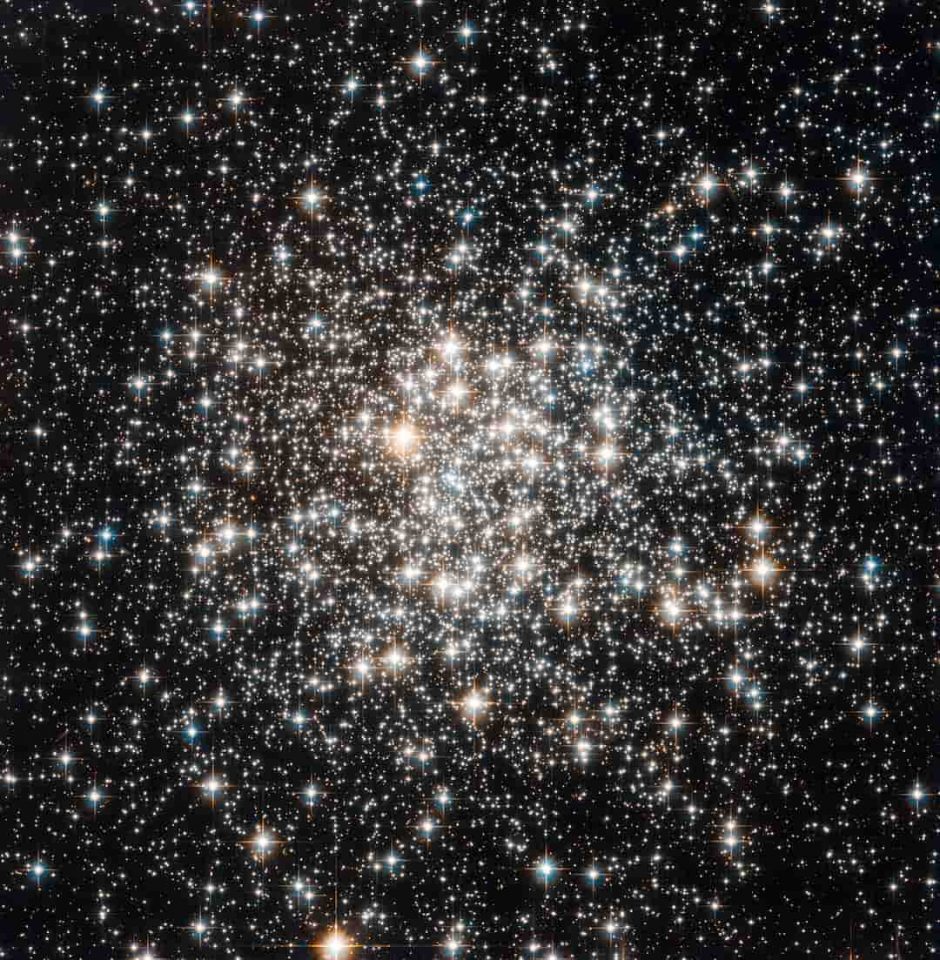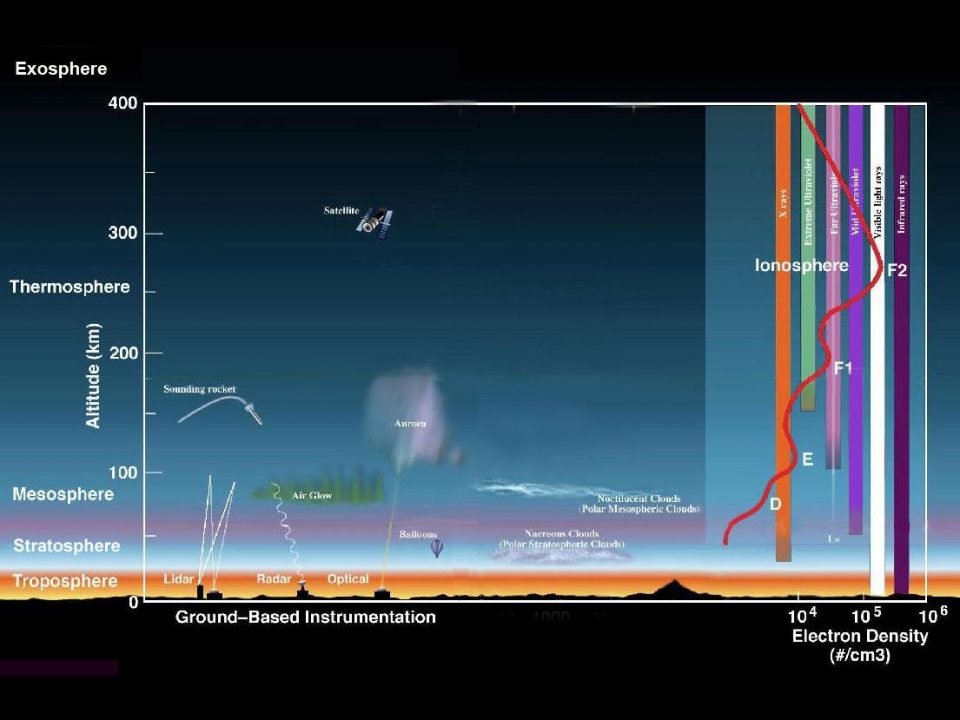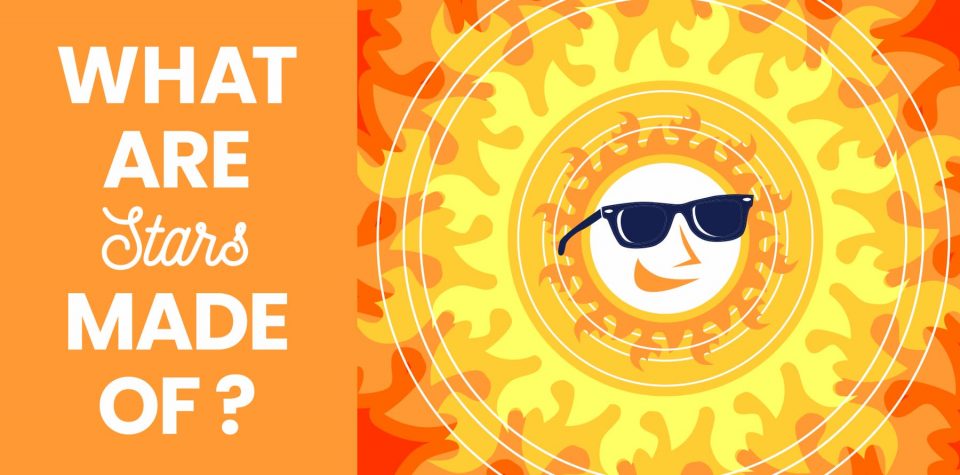
What Are Stars Made Of?
Kids often look up at the stars full of questions: What are those things? How many of them are there? What are they made of? If you’re getting ready to launch a space adventure for kids, you’ll find out some incredible things about our universe. Read on to get started!
First, stars are made of very, very hot gases. They contain small amounts of elements like oxygen, nitrogen, and carbon, but they’re around 98% hydrogen and helium, the two lightest elements in the universe.
Even though they’re made of light gases, stars are so big that they have enormous mass. That makes them very dense in the center, where the gas gets packed tightly together by gravity. The gas at the Sun’s core is ten times denser than gold. If you could pick up a one-inch cube of it, that tiny cube would weigh more than five pounds!
Stars are made out of huge clouds of hot gas, like these on the surface of the Sun.
What stars are composed of changes over time. A star works a little like a huge furnace. Hydrogen makes the furnace burn, and helium gets left behind afterward. Over billions of years, stars use up their hydrogen and turn it into helium through nuclear fusion.
Measuring What Stars Are Made Of
Until recently, scientists couldn’t directly measure what stars are made of. Instead, they used computers to test out different hypotheses—educated guesses about what might be true.
For example, one computer model might predict what a star’s life would look like if it were 75% hydrogen when it was born, and another model might predict what it would look like if it were 80% hydrogen. Then scientists compared the models’ predictions to the lives of actual stars. If a model’s predictions turned out to be accurate, scientists assumed the amount of hydrogen the prediction was based on was also correct.
Scientists study star clusters like this one to learn more about stars.
Scientists now have instruments that can look inside the Sun—our closest star—more directly, and that helps them understand what all stars are made of. They’ve found enormous clouds of gas that rise and fall inside the Sun, carrying energy from its core to its outer layers and creating vibrations like those created by earthquakes on Earth. Tracking those vibrations gives scientists a picture of what happens inside a star because the vibrations change as they move through the Sun’s different layers.
The Layers of the Sun
The Sun has seven layers: the core, the radiative zone, the convection zone, the photosphere, the chromosphere, the transition sphere, and the corona. The Sun also creates a magnetic field called the heliosphere, which is so large that it reaches beyond the solar system’s planets!
The basic journey of light from the Sun takes it from the inner layers of the Sun to the outer ones. Energy starts off in the core, where nuclear fusion happens, and moves through the other layers until it reaches the photosphere where we can see it.
This solar prominence occurred in 2010.
The outer layers of the Sun contain lots of interesting features you might have seen photos of: dark splotches on the Sun’s surface called sunspots, enormous bursts of fire known as coronal mass ejections, and solar prominences. They’re all temporary, triggered by changes in the Sun’s magnetic field. The haunting, beautiful loop of a solar prominence, for example, occurs when the Sun’s magnetic field wobbles in just the right way to make solar plasma float above the photosphere. Imagine a magnet so powerful it could control a stream of fire hundreds of thousands of miles long!
Why Do Stars Twinkle?
Starlight, including the Sun’s, must pass through the Earth’s atmosphere before it can reach our eyes. Our atmosphere filters out dangerous ultraviolet rays from the Sun, and it also bends light from stars farther away. Stars twinkle because of the way Earth’s atmosphere bends their light.
Earth’s atmosphere extends into space for over 6,000 miles (although it’s very, very thin for most of that distance), so starlight has a long trip to get from space to the ground. That journey takes it through a lot of air, and it ends up getting jostled around by the way the air moves.
If you ever look at a black road surface on a hot day, you’ll notice that it looks like it’s wobbling. That effect comes from hot air churning as it rises off the pavement, which bends the light reflecting off the road surface. The same thing happens in the atmosphere, and there’s a lot of air moving around up there. In the upper atmosphere, winds regularly reach over 100 miles per hour!
So even on a clear night, starlight travels through churning, swirling, windy air before it gets to you, and that’s why stars twinkle. If you could see what stars look like up close, you’d see their light is actually very steady.
Are Stars Planets?
Stars are not planets. Some planets, like Jupiter in our solar system, are huge balls of gas that resemble stars in a few ways, but there are two important differences. First, a planet has a rocky core, and a star does not. Second, planets aren’t massive enough to create the nuclear fusion that happens inside a star.
Planets like Jupiter aren’t quite big enough to be stars.

In order to fuse hydrogen into helium, a star has to be truly massive. Jupiter is the biggest planet in our solar system—more than 1,300 Earths could fit inside it! But it’s a long way from being a star. Even the smallest stars are 75-80 times bigger than Jupiter.
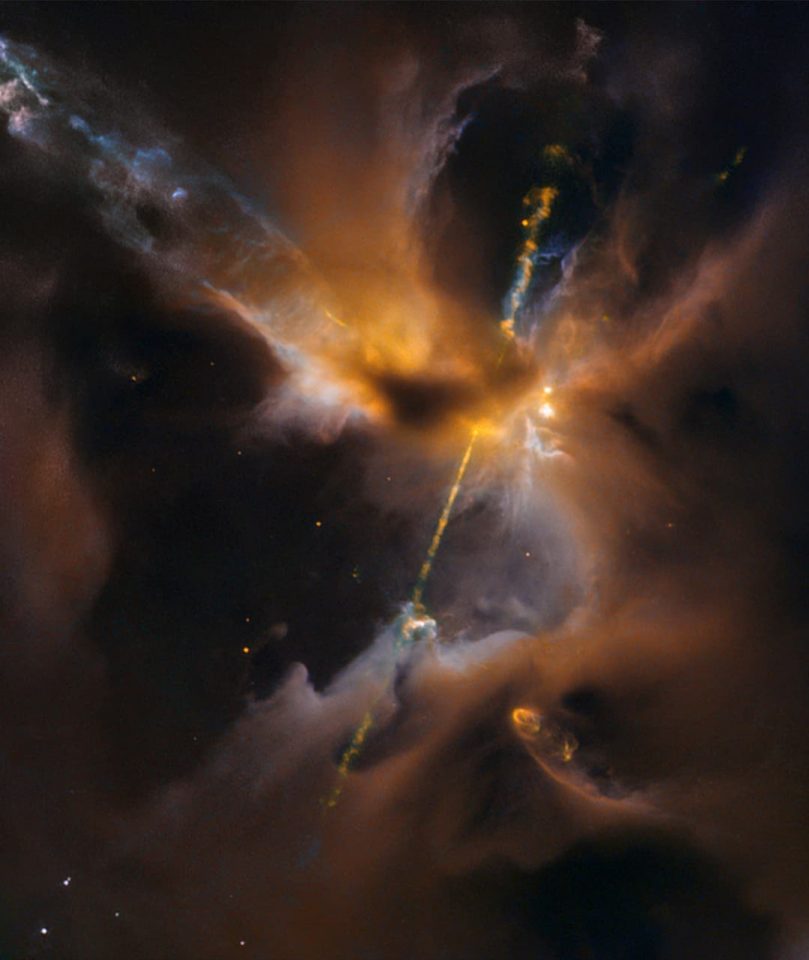
Scientists also tell stars apart from planets by the way they form. Stars are created from huge clouds of gas called nebulae, parts of which collapse into big spinning disks of material that condense until a star is born. Planets form later, as the disk of material left over after a star is created starts to clump into bigger and bigger rocky pieces.
How Many Stars Are There?
Scientists don’t know exactly how many stars there are in the universe, but they estimate at least one sextillion—that’s a million billion billion (1,000,000,000,000,000,000,000)! They got that number by estimating how many stars there are in our galaxy, then estimating how many galaxies there are in the universe and multiplying those numbers together.
There are over 5,500 galaxies in this image of a tiny slice of the sky taken by the Hubble Space Telescope.
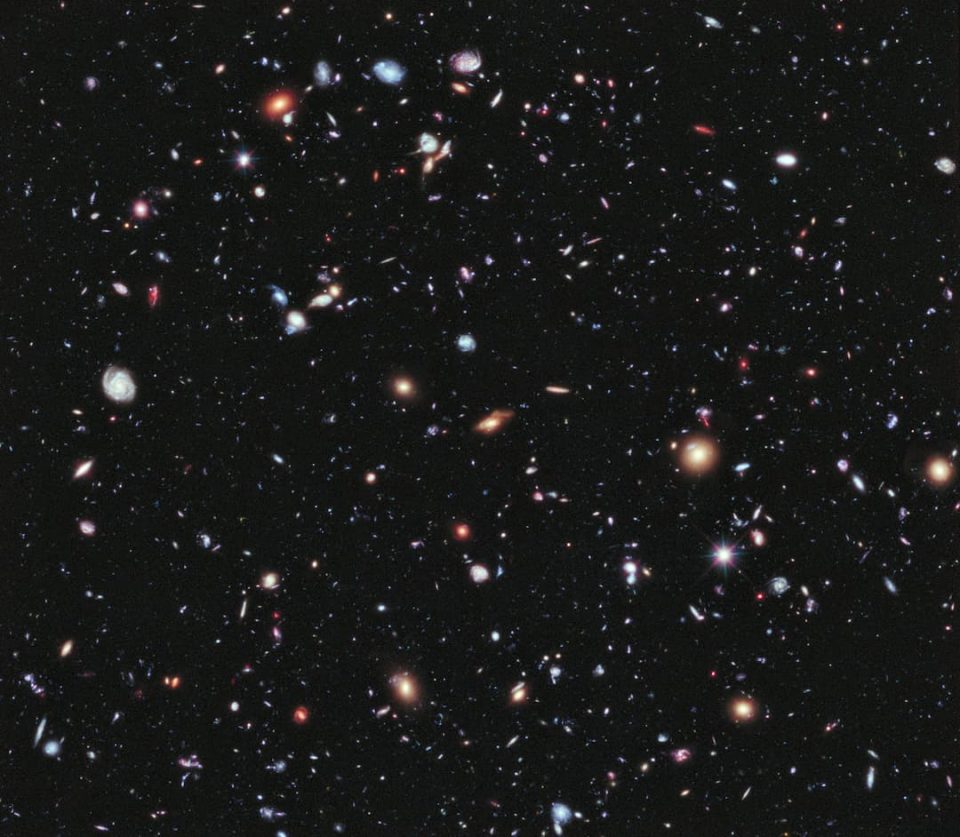
There’s a lot of uncertainty in scientists’ estimates of how many stars there are. Even our best telescopes and satellites can’t see all the stars in our galaxy. They can only take pictures of a small part of the sky at a time, and within that small picture a lot of things can go wrong—giant interstellar dust clouds, for instance, can block a star from view.
Imagine you were trying to count all the blades of grass on a lawn. If you looked down from above, you could see a lot of them, but if you were at eye level with the grass, it would be a lot harder. When we look around the Milky Way from our planet inside it, we run into a similar problem—there’s so much out there it’s hard to know what’s behind other things!
We run into even more problems when we think about how many galaxies there are. We can’t see the whole universe because we can only see things close enough to Earth for their light to reach us. The universe is also expanding, which means that out at its very edge, things are happening we’ll never see on Earth.
Light from the bright galaxy in the center of this image took 13.5 billion years to reach Earth.
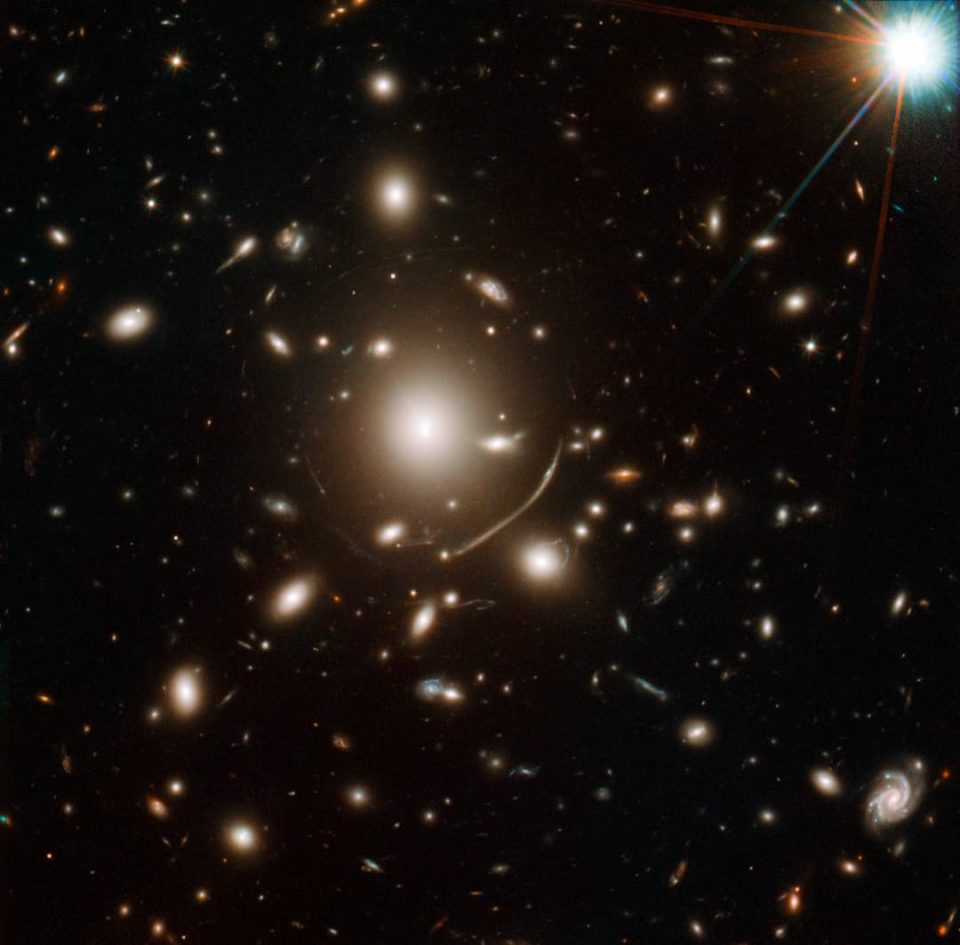
Light takes time to travel, and new stars are constantly being born and dying. The farthest we can see is about 46 billion light-years away, and light that reaches us from those places is so old that it was emitted long before stars like our Sun were created. So there are probably many more stars than we can see, but we don’t know how many!


